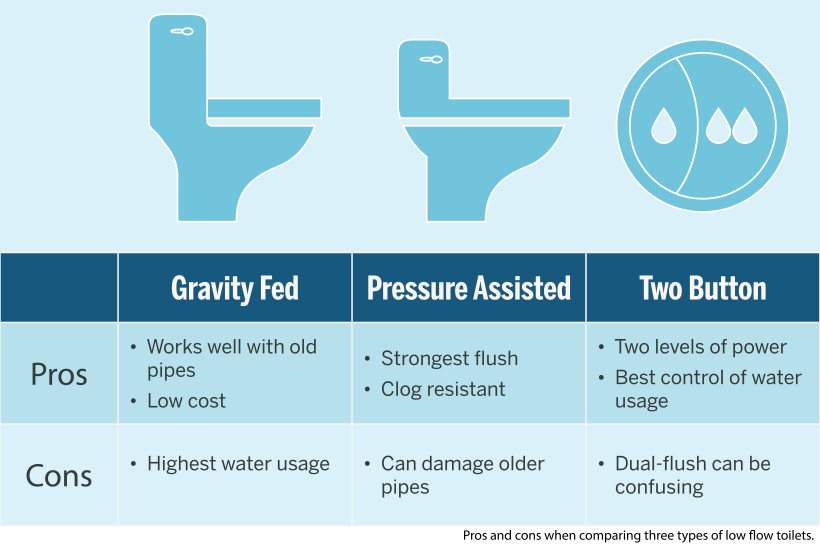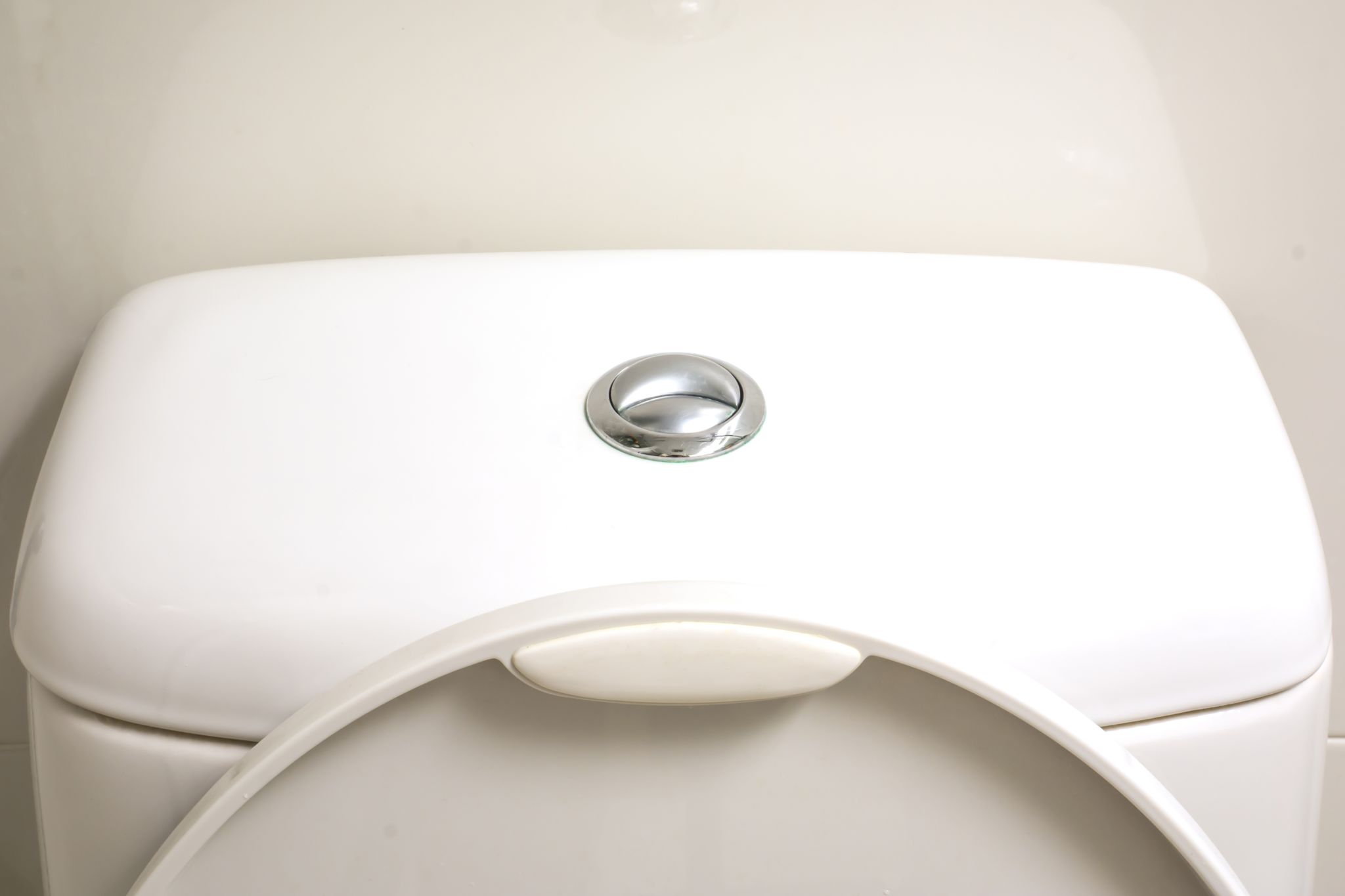When it comes to bathroom renovations, toilets take a back seat (pun intended). After all, they aren’t the most aesthetically pleasing part of your fab bathroom remodel. But when it comes to water use, toilets have the flushing power to jack up your water bill.
We’re here to help you take the plunge into all things low flow toilets. Our deep dive will explore the different types of low flow toilets and whether one makes sense for your next bathroom makeover.
What is a Low Flow Toilet?
Low flow toilets are environmentally friendly; they're designed to reduce water usage and save money on your utility bills. Their designs have improved since they were widely introduced in the 1990s. That, plus the fact that they hold less water, means they’re sleeker, smaller, and more modern looking.
How a Low Flow Toilet Works to Save Water
A low flow toilet can operate through either gravity or pressure assistance.
For gravity-driven toilets, the flapper in the toilet tank releases the water into the bowl to flush. Then, gravity takes over, dragging the waste and water through your plumbing.
A pressure-assisted toilet uses a water-filled tank to push the water from the toilet tank through the bowl once the valve is opened.
Both mechanisms will affect the toilet’s ability to remove waste, the amount of water used, and the design. These differences result in a few different types of low flow toilets. Knowing how they differ can help you buy the right one for your bathroom.
Types of Low Flow Toilets
Let’s take a deeper look at low flow toilet types and what they can do for your bathroom.
Gravity-Fed Tank
Gravity-fed low flow toilets aren’t as strong as pressure-assisted toilets, but they’re much quieter. A toilet that relies on gravity functions best on the home’s upper floors and is generally not advisable for a basement or ground floor.
Because gravity-fed toilets don’t require a more modern water supply system, they don’t wear pipes as much as pressure-assisted units. That means gravity-fed toilets could be suited to older homes, where pipes could be more prone to leakage.
On the negative side, gravity-fed tanks tend to use more water, so they’re not the most eco-friendly option.
Two-Button Flush
Two-button flush toilets use two separate gravity-based flushing mechanisms with different strengths. They can accommodate each kind of waste, whether liquid or solid. A dual-flush toilet is one of the most eco-friendly options, offering significant water savings when used appropriately.
Power-Assisted and Pressure-Assisted Models
A pressure-assisted toilet provides the most water pressure, and that prevents clogs. However, that pressure comes with more noise, and it can potentially cause damage to pipes in older homes.
Power-assisted toilets are a more expensive low-flow toilet option, costing about $250 versus $180 for a two-button flush and $100 for a gravity-fed toilet, without installation.

Low Flow Toilet Benefits
Upgrading to a low flow toilet in your bathroom offers benefits, such as:
- Lower water bills: Low flow toilets use less water than conventional toilets, saving you money on monthly water bills.
- Sustainability: Using less water is better for the environment, so you'll know you aren’t creating more waste when you flush.
- Added home value: A low flow toilet and other energy-efficient plumbing upgrades can add value to your home, upping its resale value if you sell.
Despite the advantages, installing a low flow toilet presents some downsides.
Low Flow Toilet Disadvantages
Potential downsides of low flow toilets include:
- Installation costs: These toilets can be more expensive to install. That's especially true if your home is older and your pipes or plumbing might need work to accommodate the toilet.
- Pressure issues: Low flow toilets can have more clogging issues than conventional toilets do. But this applies more to gravity-driven toilets than pressure-driven ones.
Once you understand the upsides and downsides of low flow toilets, you can decide whether they’re right for your home. If your answer is yes, you’ll have to choose between DIYing or hiring a contractor to install the toilet.
Low Flow Toilet Installation: DIY or Contractor?
Toilet installation will generally take two to four hours for a DIY homeowner. A contractor may take slightly less time.
Be aware that toilet installation isn’t the most straightforward DIY project. Plus, your plumbing or water system could suffer if the installation isn’t done properly. So, if you don’t have experience, the best move might be to hire a contractor.
A contractor will be more expensive since they charge a labor cost in addition to the money you’ve paid for your toilet. But the effort and time saved may also save you headaches in the long run.
How Much Water Will a Low Flow Toilet Save?
The Environmental Protection Agency says toilets use 30% of the water in residential homes, so upgrading your toilet can save you a huge amount of water and money overall.
Of course, the exact amount of money you save from a low flow toilet depends on how much water and energy your toilets consumed before and the price of water area.
Based on EPA averages and statistics, a low flow toilet can save your home about 11,000 gallons of water a year, translating to $140 to $180 per year in water costs. With the average price of a low flow toilet around $250, you can break even on a new low flow toilet within two years of purchasing.
